I have an annoying problem: I should show a PDF in the browser (inline-display, not download).
So far, with the code below, it works for internet explorer. But in google-chrome, it just downloads.
On the same server, a 3rd party application that does the same works fine.
I suppose the problem is the "appliction/octet-stream" that you see in the content-type header...
I find this rather annoying.
My code sets content-type application/pdf, and when I look at the actual headers sent, i see it is application/octet-stream...
According to https://superuser.com/questions/219870/how-to-open-pdf-in-chromes-integrated-viewer-without-downloading-it#
this is because the mime is octet-stream instead of application/pdf...
And I have just one question: Why ? Why ? Why ? (Why does it set octet-stream, not application/pdf as set in the code - See full code below)
Bonus question: Why is Transfer-Encoding chunked if i set Content-Length to the length of the byte-array ?
The funny thing is, it works fine on my local development server, so this seems to have something to do with the evils of IIS >= 7...

ashx:
Sub ProcessRequest(ByVal context As HttpContext) Implements IHttpHandler.ProcessRequest
Dim baPDF As Byte() = GetPdfFromImage(Me.Data)
'context.Response.Write(COR.Tools.JSON.JsonHelper.Serialize(Me.Data(context)))
context.Response.Clear()
'context.Response.AddHeader("Content-Disposition", "attachment; filename=" + strFileName)
context.Response.AddHeader("Content-Disposition", Portal.ASP.NET.GetContentDisposition("Drucken.pdf", "inline"))
context.Response.AddHeader("Content-Length", baPDF.Length.ToString())
' context.Response.ContentType = "application/msword"
' context.Response.ContentType = "application/octet-stream"
' https://superuser.com/questions/219870/how-to-open-pdf-in-chromes-integrated-viewer-without-downloading-it#
' context.Response.ContentType = "text/html"
context.Response.ContentType = "application/pdf"
context.Response.BinaryWrite(baPDF)
context.Response.Flush()
context.Response.End()
End Sub
' COR.ASP.NET.StripInvalidPathChars("") '
Public Shared Function StripInvalidPathChars(str As String) As String
Dim strReturnValue As String = Nothing
If str Is Nothing Then
Return strReturnValue
End If
Dim sb As System.Text.StringBuilder = New System.Text.StringBuilder()
Dim achrInvalidPathChars As Char() = System.IO.Path.GetInvalidPathChars()
For Each cThisChar As Char In str
Dim bIsValid As Boolean = True
For Each cInvalid As Char In achrInvalidPathChars
If cThisChar = cInvalid Then
bIsValid = False
Exit For
End If
Next cInvalid
If bIsValid Then
sb.Append(cThisChar)
End If
Next cThisChar
strReturnValue = sb.ToString()
sb = Nothing
Return strReturnValue
End Function ' StripInvalidPathChars '
Public Shared Function GetContentDisposition(ByVal strFileName As String) As String
Return GetContentDisposition(strFileName, "attachment")
End Function ' GetContentDisposition '
' http://www.iana.org/assignments/cont-disp/cont-disp.xhtml '
Public Shared Function GetContentDisposition(ByVal strFileName As String, ByVal strDisposition As String) As String
' http://stackoverflow.com/questions/93551/how-to-encode-the-filename-parameter-of-content-disposition-header-in-http '
Dim contentDisposition As String
strFileName = StripInvalidPathChars(strFileName)
If String.IsNullOrEmpty(strDisposition) Then
strDisposition = "inline"
End If
If System.Web.HttpContext.Current IsNot Nothing AndAlso System.Web.HttpContext.Current.Request.Browser IsNot Nothing Then
If (System.Web.HttpContext.Current.Request.Browser.Browser = "IE" And (System.Web.HttpContext.Current.Request.Browser.Version = "7.0" Or System.Web.HttpContext.Current.Request.Browser.Version = "8.0")) Then
contentDisposition = strDisposition + "; filename=" + Uri.EscapeDataString(strFileName).Replace("'", Uri.HexEscape("'"c))
ElseIf (System.Web.HttpContext.Current.Request.Browser.Browser = "Safari") Then
contentDisposition = strDisposition + "; filename=" + strFileName
Else
contentDisposition = strDisposition + "; filename*=UTF-8''" + Uri.EscapeDataString(strFileName)
End If
Else
contentDisposition = strDisposition + "; filename*=UTF-8''" + Uri.EscapeDataString(strFileName)
End If
Return contentDisposition
End Function ' GetContentDisposition '
This is the header of the 3rd party application, where Chrome displays it fine
